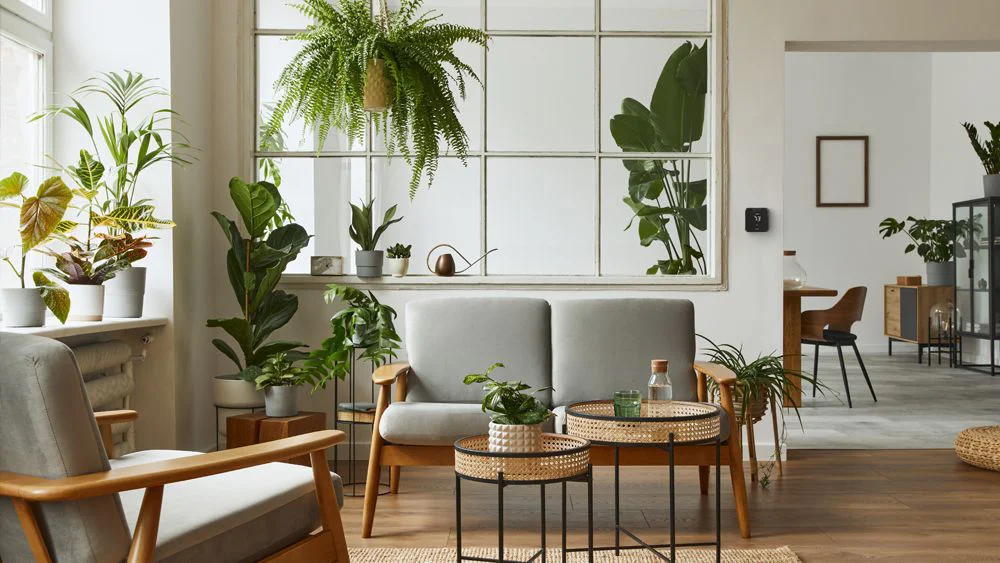
Key Takeaways
- Maintaining ideal humidity is crucial for tropical plants to prevent dehydration and promote healthy growth.
- Simple methods like misting, humidity trays, and grouping plants can effectively boost moisture levels.
- Humidifiers offer long-term, low-maintenance solutions for increasing humidity for plants.
Humidity can be a chief culprit when it comes to the health of your houseplants. Most houseplants come from tropical regions where humidity ranges between 77%-88%, almost double compared to our home environment! In nurseries, they are also provided with perfect humidity levels, like their native environment.
However, when you bring the same plants home, they are introduced to an air conditioner blowing cold air and constantly sucking up the moisture. If it’s winter, your heating system is making the air dry, and all this causes your houseplants to suffer.
Tropical plants don’t do well in low moisture. So while you are doing your best to take care of them by reading up on all their requirements and marking the calendar for the watering schedule, you may still end up with dry, limp leaves. The humidity levels in your home can be the cause of any unhealthy appearance of your indoor plants.
Let’s have a look at why humidity levels matter, how to increase humidity for plants, and how to manage indoor humidity levels using smart HVAC controls.
Why Is Humidity Important for Plants?
Humidity is an essential factor for plants as they can dehydrate quickly if they cannot replace the lost water at the same speed they are losing it.
Ideal humidity levels are essential to keep your plants lively and healthy. To understand the role of humidity, let’s briefly go through how plants intake and release water.
Plants have thousands of tiny pores on the underside of their leaves called stomata. Water evaporates through these pores, cooling the plant and enabling a flow of water and nutrients. Stomata also play an integral role in photosynthesis as they help the plants make their food by taking in carbon dioxide and releasing oxygen.
When humidity levels are low in dry conditions, plants continuously lose water. This can lead to dehydration as they cannot replace the lost water at the same speed they are losing it. To protect themselves, the plants completely close down their stomata to block the evaporation of water. When stomata are closed for an extended period, the plants cannot take in carbon dioxide to make food which harms their health and stunts their growth. When humidity levels are extremely low, then plants even start shedding their leaves to prevent dehydration from killing them.
Maintaining ideal humidity levels for plants is the only way to protect them from harm in the long run.
What Is the Best Humidity Level for Plants?
Ideal humidity levels for plants depend on the type of plant and your plant’s development stage. The weather or your home environment can also affect humidity requirements.
Most houseplants such as Parlor Palm, Pothos, English Ivy, Begonia, Ferns, Ficus plant, Peace Lily, Philodendron, Areca Palm, and Orchid plants come from tropical or sub-tropical regions. They are known to keep the air in your home fresh and are great air-purifying plants!
Tropical regions are characterized by heavy rainfalls and hot, humid summers. They experience humidity levels around 70-90%. In comparison, most homes have very low humidity levels. Especially in winters, when heating systems strip the moisture and humidity levels drop to 20% or even lower.
Your best choice to make any mini-split, window,
or portable AC smart. Enhance your comfort and savings.

On the other hand, some plants, such as most succulents, can easily thrive in low humid conditions of around 10%. On average, most house plants can thrive in humidity levels between 40-60%. Let’s summarize various humidity levels and which plants may prefer them:
0% -20%: While the air is too dry for most houseplants at this level, your cacti or succulents will be able to survive till around 10% lowest.
20% – 40%: This will be the average humidity level for most indoor places. Some plants will survive while others, especially tropical plants, will not flower and result in droopy leaves.
40% – 60%: This is the ideal humidity level for most houses during summer and the perfect humidity level for most plants to flourish. With specific ways to increase humidity, such as misting, other plants can also easily survive. This level is also ideal for flowering and vegetation.
60% – 80%: This humidity level can be difficult and uncomfortable to maintain at home but is perfect for a greenhouse. It’s most suitable for tropical plants.
80% +: Though not possible at home, tropical plants such as pineapples have incredibly high humidity requirements of around 90%! This level is also perfect for germination and seedling growth.
5 Signs Your Houseplants Need Higher Humidity
When plants, naturally existing in high humid conditions, are placed in a dry home environment, they show signs of stress. Here are five common symptoms indicating that your houseplants need higher humidity:
1. Brown Edges & Crispy Leaves
In dry conditions where the humidity levels go below 50, you will notice that your houseplants’ leaves have started to crisp up and turn brown at the edges. Harsh sunlight can also be the cause, but low humidity is the biggest culprit.
Plants transpire through leaves, and in arid conditions, when the rate of transpiration is highest, leaves suffer the most. Plants cannot remain hydrated through the soil moisture alone, which results in crispy, dry leaves.
This is a warning sign and calls for increasing the humidity level in your home.
2. Dull Looking Leaves
When your houseplants are constantly losing water through their leaves, you will notice an unhealthy appearance. They will appear dull and lost their shine due to the high rate of evaporation.
3. Stunted Growth
In dry conditions, plants are unable to photosynthesize/make their food, resulting in stunted growth. The plants in this situation have limited nutrients, so they focus their energy on surviving instead of actively growing.
4. Wilting
Plants wilt when severely dehydrated, but low humidity can also cause symptoms similar to wilting. You will notice drooping leaves and stems turning brown in a dry environment. If humidity levels are not raised timely, your plants can suffer permanent damage.
5. Yellow Leaves
Yellow leaves can be due to various reasons such as insufficient nutrients, harsh sunlight, and water issues. But if you notice many leaves yellowing, then low humidity is to be blamed in your dry home environment.
How to Increase Humidity for Plants

If you frequently encounter issues such as drying, brown leaves, and an unhealthy appearance, try to increase the humidity for your plants. Mimic their natural habitat, and you will see a healthy change in no time!
Here are 10 ways you can work to increase humidity for plants:
1. Humidity Tray for Plants
A popular method to increase moisture levels is to use a humidity tray for plants. The water continues to evaporate from the water tray, which increases the humidity levels.
Use a clay or a ceramic tray, an inch or two bigger than the pot size. First, fill it with rocks and pebbles. Next, fill half of the tray with water and place your planters on top of the pebbles. Make sure that the stones are big enough, so plants do not touch the water. If the bottom of the pot is in water, it will lead to root rot, and your plant will eventually die.
When watering the plants placed on humidity trays, make sure to empty the tray after every session. This is to ensure that bacteria and mold do not start breeding in stagnant water. Even if you remove your plant from the tray before the watering session, empty the tray after 2-3 days and then refill it with fresh water.
2. Mist to Increase Humidity for Plants
One of the simplest ways to increase the moisture level is to mist your plants. Your high humidity plants will definitely love the dewy layer of moisture on their leaves.
You can keep water in a spray bottle near your plants and mist whenever the air feels dry. Never use tap water that has been treated with chlorine directly on plants. Chlorine is toxic for houseplants. Instead, allow the water to sit for 24 hours so that the chemical evaporates.
Spraying your plants increases the moisture level around them but does not add up to the overall humidity levels. Also, this method won’t considerably boost the humidity levels. Hence, requiring you to mist several times during the day depending on how dry it gets in your area.
Factors to consider when misting plants:
- Not all plants like to be misted. You shouldn’t mist plants that have hairy or velvety leaves. Misting desert plants such as cactus and succulent species is a big no as they can rot from the extra water on their leaves.
- Extra moisture on leaves attracts fungus, so good air circulation is a must when misting your plants.
3. Get a Humidifier
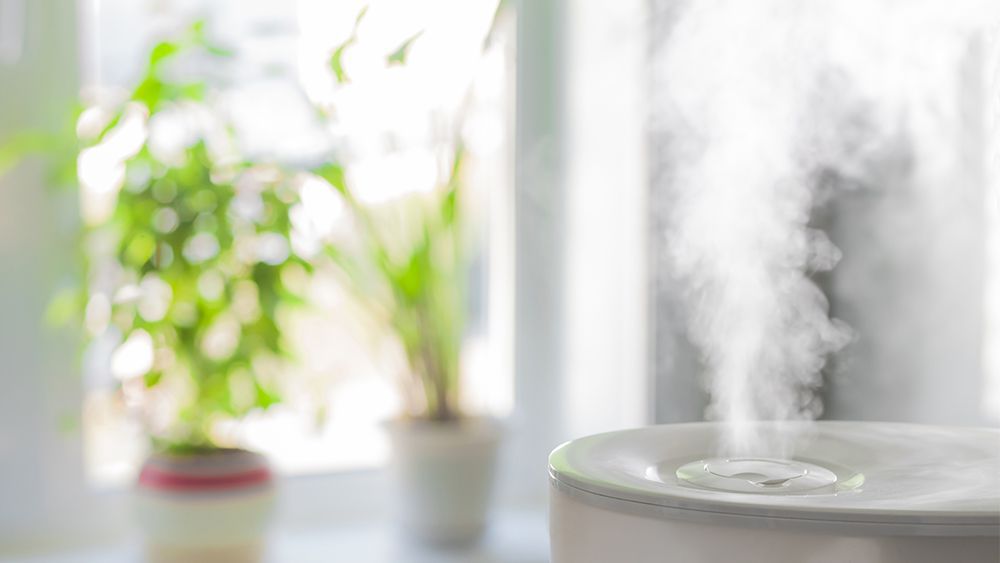
The perfect way to increase humidity for plants is to invest in a humidifier. It works by releasing water vapor or steam, which increases the moisture content in the air. It can ensure optimal humidity levels for all your tropical plants that thrive in high humidity.
You can keep the humidifier on for the entire day or choose to operate at certain times, depending on external climate conditions. When purchasing a humidifier for plants, go for one that has a higher run time, so you don’t have to keep refilling the water tank.
Using the humidifier is also beneficial for you, as low humidity levels in winter cause dry skin, irritated throat, and other problems.
4. Place Your Plants in Humid Areas
Placing your plants in high humid areas of your home such as the bathroom, kitchen, and laundry room is another technique to boost the humidity levels.
The wet environment from the shower, bathtubs, and sinks can significantly help your high humidity plants. Moreover, steam from cooking food can also serve the intended purpose.
Consider moving plants such as Peace Lily, Fern, Indoor Palm, and English Isvies in these areas, especially during winters when the humidity levels take a dip.
5. Build a Closed Terrarium
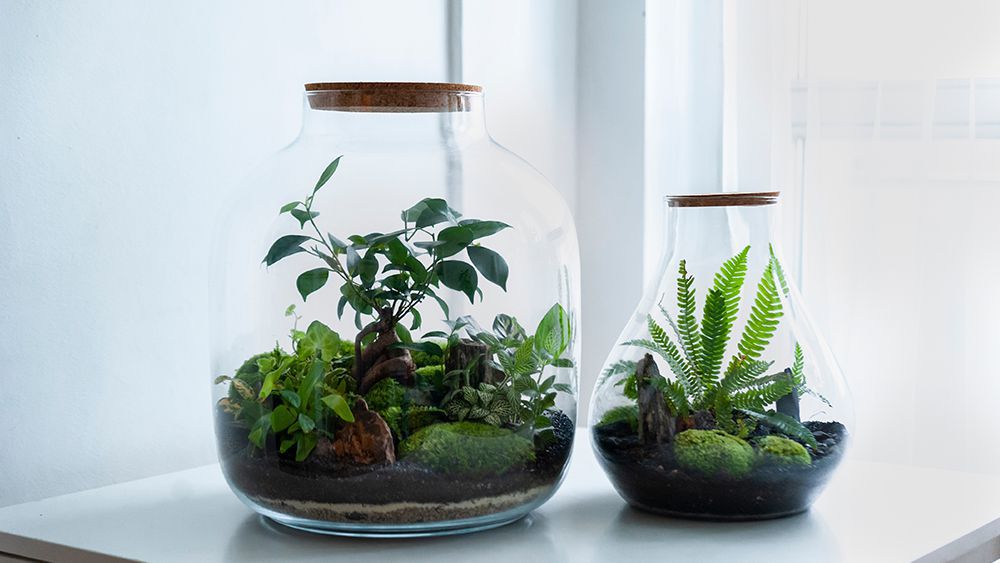
A closed miniature garden with small plants and colorful pebbles does not only look beautiful but can also serve as a way to increase humidity for plants.
Terrariums are self-sustaining as plants water themselves through transpiration and condensation. It is pretty easy to build a terrarium, you just require few materials, and you will have it ready in no time.
Plants take up water when you spray the terrarium soil and exhale water vapors through transpiration, which then condenses on the terrarium’s walls. The condensed water eventually falls back into the soil, creating a cycle.
Spray the terrarium when you feel its soil is dry. Take the lid off twice a week to allow for air circulation and to prevent mold growth.
6. Opt for a Two Pot Method
The two-pot method is a unique way to boost humidity levels for your plants. The idea is to put your regular houseplant pots into another pot 1-2 inches bigger in width and height. Fill the bigger pot with sphagnum moss and spray it with water. You can also cover the soil in the original pot with moss.
Sphagnum moss holds moisture and prevents soil from drying quickly. The water in the sphagnum moss will evaporate, increasing the humidity levels for the plant.
When using this technique, make sure that both the pots have drainage holes to avoid root rot and fungus growth.
7. Group Your Plants
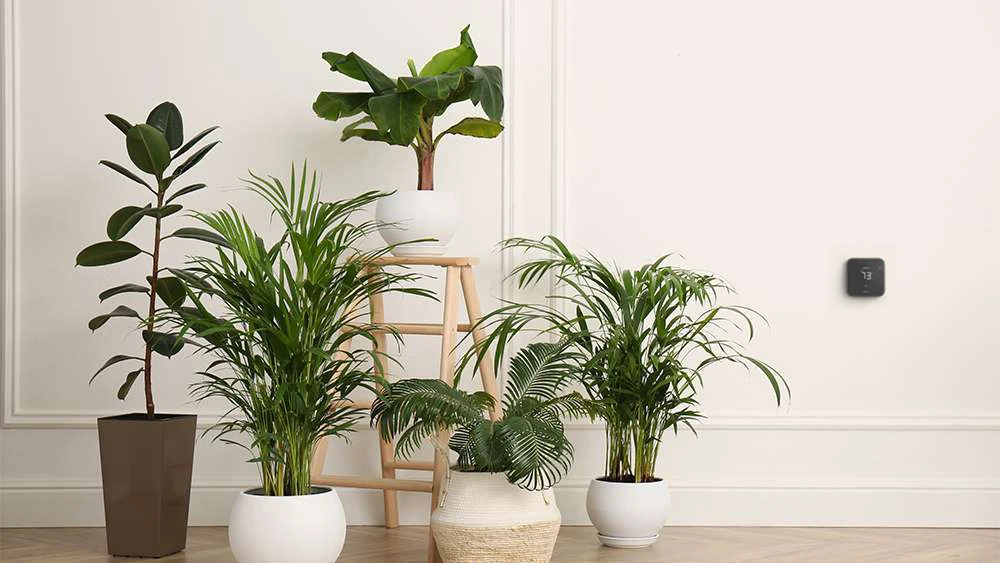
Group the high humidity plants to create a humid microclimate. Plants release moisture by the process of transpiration, and when many are grouped, it helps increase humidity levels.
Roots absorb water which is then take up by stems and leaves through a vascular system. When the water reaches the leaves, it evaporates and increases the indoor humidity.
The key here is to group plants with similar humidity requirements. For example, grouping together English Ivy plants will significantly increase humidity because of their high transpiration rate. The more, the merrier!
8. Shower Your Plants
Take all your humidity-loving plants and give them a good rinse in the shower or place them directly in the bathtub. You can also use a watering can for this method. Just make sure it is filtered water or allow the regular tap water to sit for 24 hours so that chemicals such as chlorine or fluoride evaporate. After showering, let the plants dry and put them back in their place.
The soil and leaves drenched in water increase the evaporation rate, leading to high humidity. This method also helps clean the foliage and remove all the collected dust on the leaves. Another benefit of showering the plants is that it helps eliminate tiny pests stuck on leaves and stems.
9. Dry Laundry Near Your Houseplants
Another way to increase humidity for plants is to dry laundry near them. Wet clothes are a good source of moisture, and as they dry, they transfer water to the air, increasing the humidity levels.
You can either take your plants where you dry your laundry or put a drying rack near your houseplants. One downside is that you can only use this technique on your laundry day, and you will have to adopt a different method on other days.
10. Cover Your Plants With a Plastic Bag
This method may seem dangerous, but it can only pose damage if not done correctly. You can opt for this when other techniques are not an option.
Take a simple plastic bag and cover your humidity-loving plants with it. Make sure that the plastic bag is not directly touching the leaves. You can use wooden stakes to keep the plastic away from the foliage.
Open the plastic bag from time to time and check for excess condensation forming inside the plastic. Moreover, never put your plants covered in plastic in direct sunlight, as it can get really hot inside this greenhouse-like setting and can burn the foliage.
Maintaining Ideal Humidity Levels for Plants Using Smart Devices
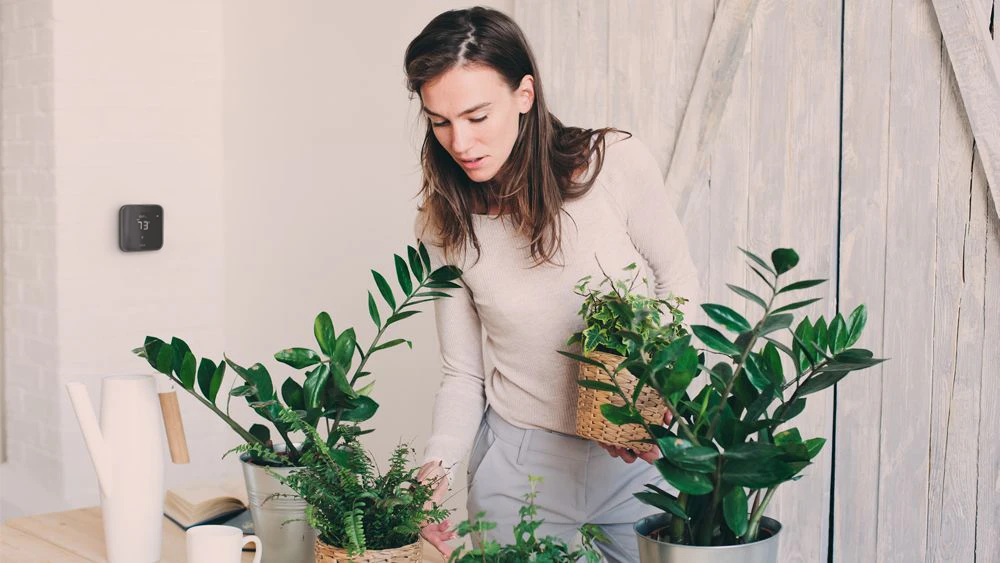
Houseplants can be drama queens; even a small change can upset them, especially if it’s related to weather. So, to maintain ideal home humidity levels, consider investing in smart devices.
Smart AC controllers can be paired with your humidifier. They come with built-in humidity sensors that can monitor and maintain the humidity levels for your plants.
You can control these smart devices using your phone and view the current humidity levels in your home at any time of the day. Moreover, you can set a daily or weekly schedule depending on the weather outside. This provides great convenience as you don’t have to change the settings on your humidifier constantly. It is also highly beneficial if you have a room dedicated to your plants, such as green or grow rooms.
Cielo Breez smart AC controllers have a Comfy Mode that lets you choose the best humidity range for your air conditioning. If the levels exceed or fall short of the selected range, the sensors will automatically trigger your preferred settings.
For example, if you have chosen the range between 40%-50%, the Comfy Mode will turn the humidifier on/off if the levels go below or above these numbers.
You can easily connect your humidifier with Cielo as long as it comes with an IR-based remote control.
Now that you know why your houseplants have been acting up, it’s time to get to work. Try one of the methods mentioned above to increase humidity for plants and make them happier and healthier. Also, don’t forget to use a smart thermostat or a smart AC controller to manage ideal humidity levels throughout the year!









1 Comment. Leave new
Can I group my snake plants with my anthurium, arrowhead, rubber plant, and pothos? For balanced humidity that would satisfy all the plants.